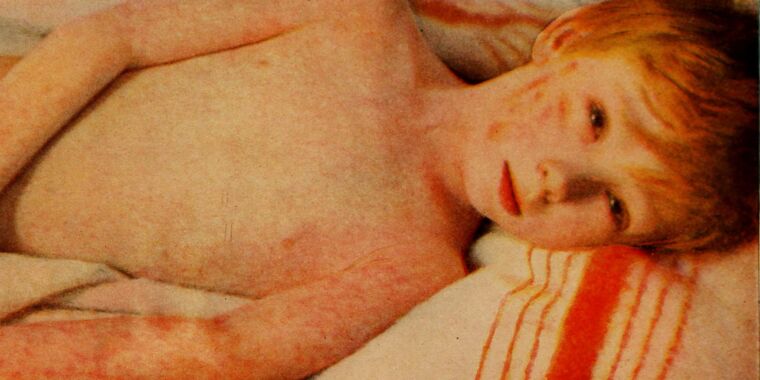Bird flu virus from Texas human case kills 100% of ferrets in CDC study

The strain of H5N1 bird flu isolated from a dairy worker in Texas was 100 percent fatal in ferrets used to model influenza illnesses in humans. However, the virus appeared inefficient at spreading via respiratory droplets, according to newly released study results from the Centers for Disease Control and Prevention.
The data confirms that H5N1 infections are significantly different from seasonal influenza viruses that circulate in humans. Those annual viruses make ferrets sick but are not deadly. They have also shown to be highly efficient at spreading via respiratory droplets, with 100 percent transmission rates in laboratory settings. In contrast, the strain from the Texas man (A/Texas/37/2024) appeared to have only a 33 percent transmission rate via respiratory droplets among ferrets.
“This suggests that A/Texas/37/2024-like viruses would need to undergo changes to spread efficiently by droplets through the air, such as from coughs and sneezes,” the CDC said in its data summary. The agency went on to note that “efficient respiratory droplet spread, like what is seen with seasonal influenza viruses, is needed for sustained person-to-person spread to happen.”
In the CDC’s study, researchers infected six ferrets with A/Texas/37/2024. The CDC’s data summary did not specify how the ferrets were infected in this study, but in other recent ferret H5N1 studies, the animals were infected by putting the virus in their noses. Ars has reached out to the agency for clarity on the inoculation route in the latest study and will update the story with any additional information provided.
All six of the infected ferrets developed severe disease and died. To test how well the virus could spread among the ferrets, the CDC scientists set up experiments to test transmission through direct contact and respiratory droplets. For the direct transmission test, three healthy ferrets were placed in the same enclosures with three experimentally infected ferrets. All three healthy ferrets became infected.
For the respiratory transmission test, three healthy ferrets were placed in enclosures next to enclosures containing the experimentally infected animals. The infected and uninfected ferrets shared air, but did not have direct contact with each other. Of the three healthy ferrets, only one contracted the H5N1 virus (33 percent). Additionally, that one respiratory transmission event seemed to have a one- to two-day delay compared with what’s seen in the same test with seasonal influenza viruses. This suggests further that the virus is inefficient at respiratory transmission.
The CDC called the overall results “not surprising.” Previous ferret experiments with H5N1 isolates—collected prior to the current bird flu outbreak among US dairy cows—have also found that H5N1 is often lethal to ferrets. Likewise, H5N1 isolates collected from Spain and Chile during the current global outbreak also found that the virus was inefficient at spreading via respiratory droplets among ferrets—with rates ranging from 0 percent to 37.5 percent.
For now, the findings don’t affect the CDC’s overall risk assessment for the general public, which is low. However, it does reinforce the risk to those who have contact with infected animals, particularly dairy and poultry farm workers.
To date, there have been four human cases of H5N1 in the US since the current global bird flu outbreak began in 2022—one in a poultry farm worker in 2022 and three in dairy farm workers, all reported between the beginning of April and the end of May this year. So far, the cases have been mild, the CDC noted, but given the results in ferrets, “it is possible that there will be serious illnesses among people,” the agency concluded.
As of June 9, the US Department of Agriculture has confirmed H5N1 in 85 dairy herds and one alpaca farm across 10 states.
Bird flu virus from Texas human case kills 100% of ferrets in CDC study Read More »


